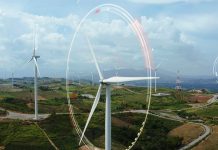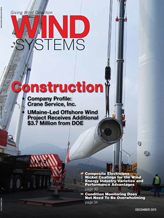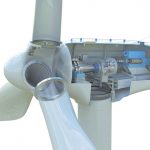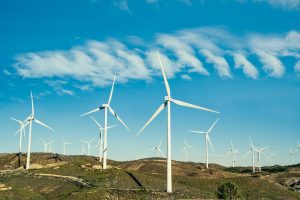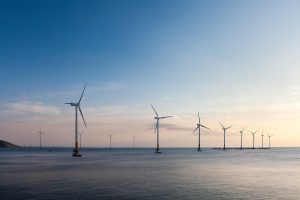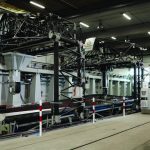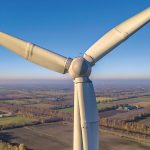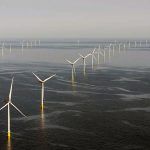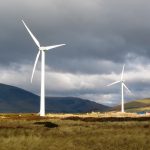United Wind Inc., a provider of distributed wind energy solutions, recently secured $13.5 million in financing from the U.S. Bank and the New York Green Bank in October to expand its WindLease program that enables residential and commercial property owners to lease distributed-scale wind turbines at or below 100 KW of rated capacity. The company installs and maintains the turbines for qualified customers through a fixed-rate, 20-year lease with no initial upfront costs.
“We create a custom tailored package for each customer,” said Russell Tencer, CEO of United Wind. “We handle regular maintenance throughout the lease period. We also remotely monitor all our turbines to ensure that they are running properly and generating the guaranteed output.”

The WindLease program was designed to make the consumer decision to choose wind energy as easy as possible. During the leasing periods, the property owner will typically save 30 percent or more on their electricity costs. United Wind provides an immediate 10 percent in savings on current energy rates and locks in the consumer’s electricity rates at a 1.9-percent fixed annual inflation rate, far less than the average historical average utility escalation rates of 3 to 5 percent.
Tencer co-founded the Brooklyn, New York-based company in 2013 when he saw the demand for consumer-sited renewables in the wind energy industry.
“Initially, I was drawn to the technology,” Tencer said. “I love the concept of a wind turbine harvesting wind and generating electricity for a property owner. It’s just a common sense solution.”
United Wind is the product of a merger of two small wind energy outfits: one that focused on small wind turbine distribution and the other that specialized in wind analytics. Wind analysis for small projects used to be prohibitively expensive, but United Wind’s proprietary analytics tool allows the company to provide high-quality site assessments at an affordable price.
“By putting these two offerings together, we were able to fill a void in the marketplace and create a one-stop-shop for small distributed wind projects,” Tencer said.
United Wind has grown significantly since its early days. The company currently has 26 turbines spinning, primarily in upstate New York with hundreds in the pipeline throughout the tri-state region.
“We’ve raised three rounds of funding, signed over 150 leases in New York, and recently expanded into the Midwest market by opening an office based in Colorado,” Tencer said. “Our WindLease model is resonating, and customers and investors alike have taken notice.
According to Tencer, wind tends to be most efficient in rural areas, and farms, of course, tend to be rural and have an abundance of land. Farms also have higher electricity bills, making them an ideal customer for United Wind’s WindLease initiative that could potentially save them a tremendous amount of money on power generation throughout the life of the project.
However, United Wind’s WindLease program isn’t limited to farmlands.
“We have turbines at vineyards, people’s homes, and other businesses,” Tencer said. “Anyone who has ‘good’ wind and the land for it can benefit from our program. When it comes to small wind, people in rural communities tend to view our turbines as just another piece of farm equipment. To our cost-conscious consumers, harnessing wind resources to save money makes sense.”
 Following the recent multimillion dollar investment, Tencer said United Wind is looking to close a much larger deal before the end of 2015.
Following the recent multimillion dollar investment, Tencer said United Wind is looking to close a much larger deal before the end of 2015.
“There’s certainly been a snowball effect now that we’ve had some high-profile financing, and the investment interest has increased,” Tencer said. “In regards to the wind industry, while big wind tends to get most of the press coverage, this sort of financing signals to consumers, policymakers, and investors that small wind is a viable player in the energy space as well.
“Our challenge has been in keeping up with demand. Until now, small wind hasn’t been a big enough market to entice large investors. However, our investors are seeing the demand our program has generated, and they’ve responded.”
According to Tencer, the company expects to continue to compete with traditional sources of power generation on a per-kW-hour basis across an expanded section of wind-rich regions in the U.S.
“Thanks to our WindLease program, which is quite similar to what the rooftop solar model has been able to achieve, we’re providing access to wind energy to those who might have never explored the option,” Tencer said. “I think we’ll see the idea of backyard wind grow exponentially, especially as small wind turbines continue to become ever more efficient and more investors see the value in what we’re doing. I see small and distributed wind playing a significantly larger role in power delivery, and as small wind turbines become more accessible, I expect that we will be a serious player in the power industry.”


















